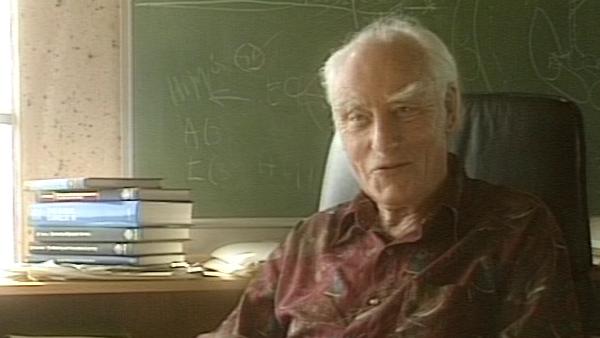NEXT STORY

The length of a strand of DNA
RELATED STORIES

NEXT STORY

The length of a strand of DNA
RELATED STORIES


|
Views | Duration | |
|---|---|---|---|
| 81. How being a scientist affects the way one sees the world | 1 | 642 | 01:34 |
| 82. The complexity of a single cell | 564 | 01:50 | |
| 83. The length of a strand of DNA | 553 | 01:21 | |
| 84. George Gamow and the RNA Tie Club | 1 | 1017 | 03:05 |
| 85. How we came to write the genetic code | 594 | 01:48 | |
| 86. If not Crick and Watson then who? | 2 | 834 | 02:11 |
| 87. Should Rosalind Franklin have shared the Nobel Prize? | 2165 | 00:36 | |
| 88. Which field of science is the right one for you? | 1 | 682 | 02:05 |
| 89. Getting the balance right between work and relaxation | 765 | 01:31 | |
| 90. What is at the bottom of consciousness? | 1 | 1096 | 02:33 |

I think you get a feeling for the complexity of a single cell and particularly a nerve cell, of course, which is more interested in all sort of cells, but I think you can… because you have to realise, you have to just sort of scale everything up in your mind and try and think of the cell in terms of the molecules in which it made up. And when you think of it that way, and think how many different types of molecules and how they interact and how they arranged and all the… the arrangement of the… the membranes of the cell and the filamentous particles and things like that, but you have to go… be able to think in terms of the molecular level. But what… if you’re used to thinking about atoms and molecules so that they’re like objects of everyday life, there isn’t any particular problem in imagining the complexities of a cell. The… it… you should think of it this way, it isn’t that the cell is small, it's that you are big. You see, you should think… start off with the atoms of which everything is made and which... and the… the atoms make up the molecules which are not that much bigger than atoms. In terms of diameter there’s only… not weight, but only less than a factor of 1000, say, between a… a very big molecule… it depends on the shape. But… but when you know… when you start from the atoms, of course, which is where you… I think you should start, then you see that it… is necessarily a very complex object. And then you have to realise that you are made of an enormous number of cells, so it's only if you start… take an everyday point of view that you think the cell is small. I don’t think of cells as small, I think of them as large, at least in some contexts. I don’t honestly think about subatomic things. I just have to go down to the atoms, as a… as a physicist would have to do.
The late Francis Crick, one of Britain's most famous scientists, won the Nobel Prize in Physiology or Medicine in 1962. He is best known for his discovery, jointly with James Watson and Maurice Wilkins, of the double helix structure of DNA, though he also made important contributions in understanding the genetic code and was exploring the basis of consciousness in the years leading up to his death in 2004.
Title: The complexity of a single cell
Listeners: Christopher Sykes
Christopher Sykes is an independent documentary producer who has made a number of films about science and scientists for BBC TV, Channel Four, and PBS.
Tags: cell, molecule, atom, physicist
Duration: 1 minute, 50 seconds
Date story recorded: 1993
Date story went live: 08 January 2010